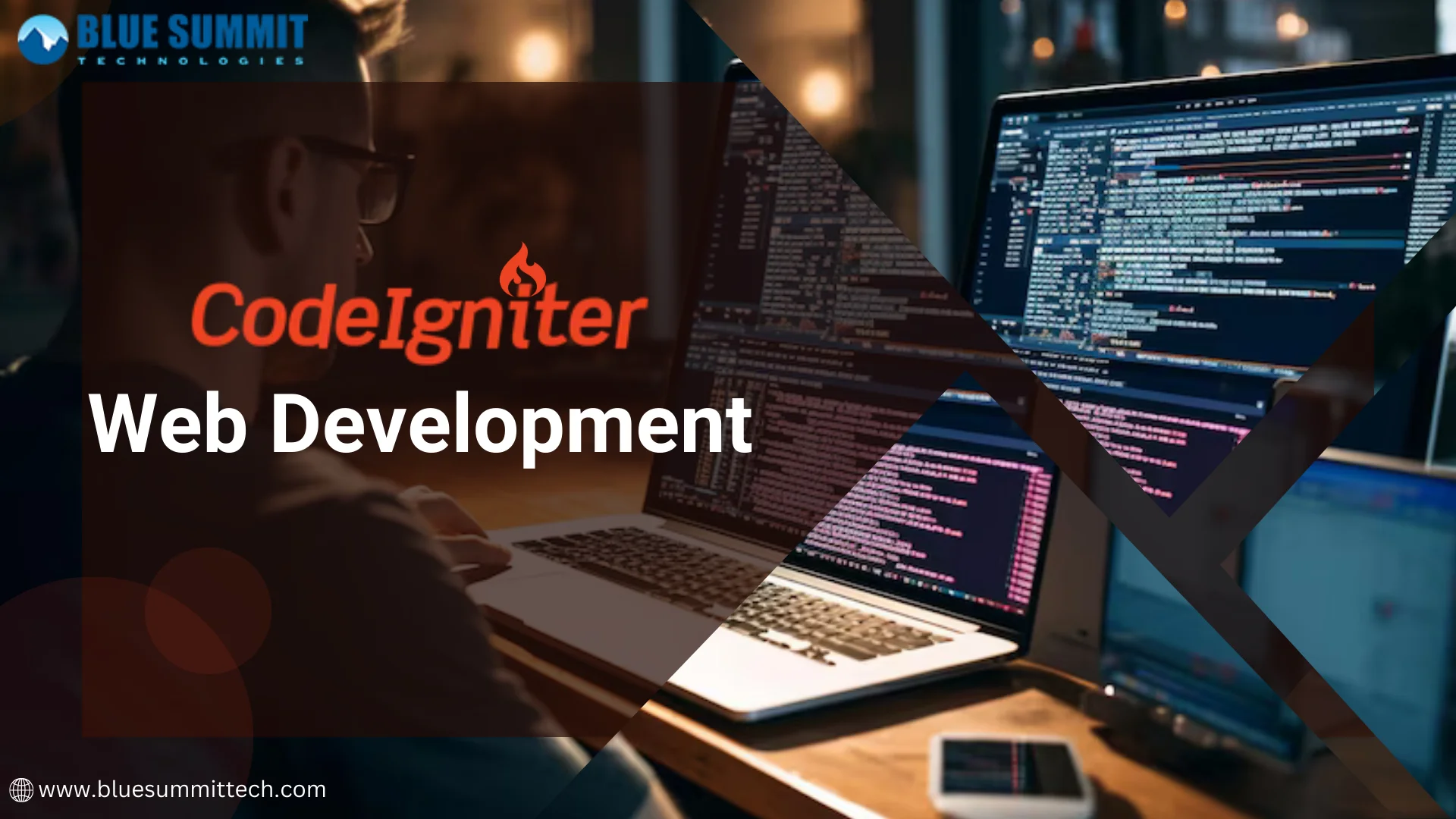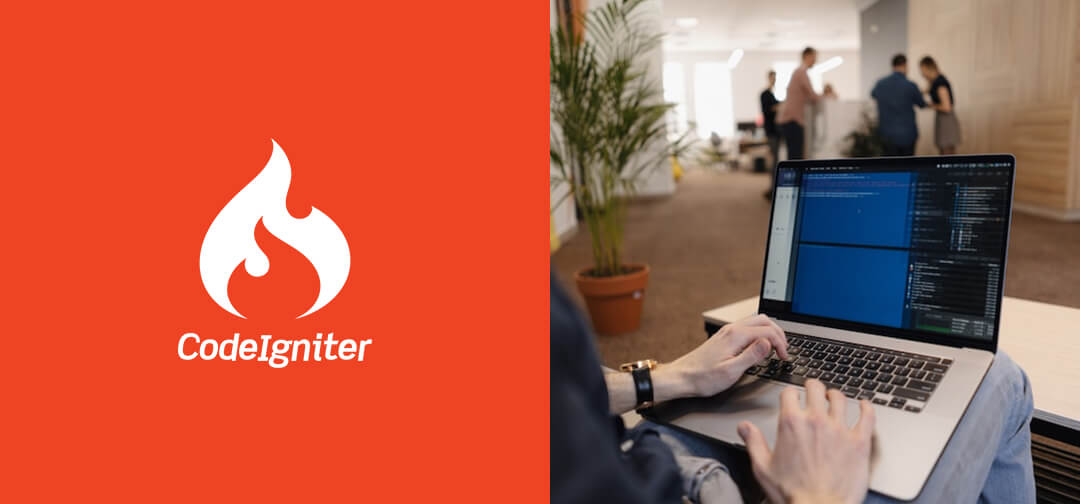
Posted on Thursday, Jun 06th, 2024
Web Development with CodeIgniter PHP Framework
The CodeIgniter PHP framework offers web developers a complete solution for creating dynamic web applications, making it a potent and agile toolbox. Well-known for its effectiveness and simplicity, CodeIgniter is especially well-liked for its lean and quick performance, which sets it apart from other web development tools. The framework's small footprint ensures quick load times and smooth user experiences while having little effect on server performance. Its Model-View-Controller (MVC) architecture encourages a clear division of responsibilities, improving the scalability and maintainability of the code. The many libraries provided by CodeIgniter simplify challenging tasks and promote a quicker, more effective development process.
Overview of the CodeIgniter PHP Framework
CodeIgniter has several advantages, one of which is its environmental impact, which guarantees the speed and effectiveness of web apps. It is also a sensible option for both novice and skilled developers due to its easy configuration and error handling. The benefits of CodeIgniter also extend to its strong security features, which help protect web applications from threats. Additionally, the framework's extensive library and vibrant community support streamline the development process, facilitating the creation of feature-rich online applications. CodeIgniter's MVC architecture, which divides the data model from the user interface and encourages clean coding practices, adds even more benefits to the framework. Web applications can now be scaled and managed more easily as a result.One of the key features of the CodeIgniter PHP framework is its straightforward and logical structure. It follows the Model-View-Controller (MVC) architecture, promoting a clean separation of concerns and fostering maintainable code. This design pattern not only streamlines the development process but also enhances the scalability of applications. Furthermore, CodeIgniter’s extensive library set simplifies complex functionalities such as form validation, session management, and database abstraction, allowing developers to focus more on building features rather than handling repetitive coding tasks.
Core features of CodeIgniter
CodeIgniter utilizes a strong routing mechanism to effectively route incoming HTTP requests to the relevant controllers in your application. With the help of this mechanism, you can create adaptable URL structures for your application that improve search engine optimization (SEO) while remaining user-friendly. Also, CodeIgniter's routing features easily mesh with security protocols, letting you set up user permissions and access controls to protect critical areas of your program. You can limit access to particular controllers or methods according to user roles or authentication status by using routing rules. This multi-layered approach preserves data integrity while protecting your application from unwanted access.1. MVC Architecture
CodeIgniter heavily emphasizes the Model-View-Controller (MVC) architectural pattern. This pattern separates an application into three distinct parts:Model: Handles data access logic, interacting with databases and business logic.
View: Renders the user interface based on data provided by the controller.
Controller: Receives user requests, interacts with the model to process data, and selects the appropriate view to display.
2. Database Support
Interacting with databases is fundamental for most web applications. CodeIgniter web development streamlines this process by providing comprehensive database classes. These classes offer support for various database platforms, allowing developers to connect, query, and manipulate data efficiently. Additionally, CodeIgniter's query builder simplifies writing complex database queries, making it easier to interact with your data storage.3. Security and XSS Filtering
Security breaches can be catastrophic for web applications. CodeIgniter prioritizes security by incorporating built-in features that shield your application from common attacks. One such threat is Cross-Site Scripting (XSS), where malicious scripts are injected into seemingly harmless web pages. CodeIgniter's XSS filtering helps prevent these attacks by sanitizing user input and ensuring the integrity of your data.4. Efficient Development Process
CodeIgniter's structured approach, pre-built libraries, and focus on simplicity contribute to an efficient development process. This translates to faster development cycles and reduced time-to-market for web applications. Developers can leverage the framework's features to streamline common tasks, minimize boilerplate code, and focus on core application logic. Additionally, the extensive community and resources provide valuable support, enabling developers to find solutions and overcome challenges quickly.5. Active Community and Support
CodeIgniter benefits from a large and active community of developers. This translates to readily available resources, including online forums, tutorials, and third-party libraries. Additionally, the official documentation is regularly updated, ensuring developers have access to the latest information and best practices.Understanding MVC Architecture in CodeIgniter
CodeIgniter, a powerful PHP framework, minimizes web development by offering a structured Model-View-Controller (MVC) architecture and a wide range of pre-built libraries. With the help of this powerful combination, developers can create dynamic, safe web applications more quickly. Because of CodeIgniter's MVC architecture, code organization, maintainability, and reusable are encouraged. Without getting bogged down in intricate logic, developers can concentrate on creating the application's core functionalities (managed by the model) and creating an intuitive user interface (managed by the view). Serving as a middleman, the controller takes requests from users, interacts with the model to process data1. Model
The Model represents the data and the business logic of the application. It directly manages the data, logic, and rules of the application. In CodeIgniter, the Model is responsible for handling interactions with the database, such as retrieving, inserting, updating, and deleting data. Models handle the data-related tasks and ensure that the application’s information is managed efficiently and securely.2. View
The View is the part of the application that deals with the presentation layer. It is responsible for displaying the user interface and rendering the data provided by the Model to the user. Views include HTML, CSS, and JavaScript, and they pull in dynamic data to present a seamless user experience. They ensure that the front-end of the application is decoupled from the back-end logic.3. Controller
The Controller acts as an intermediary between the Model and the View. It handles user input, processes it (potentially involving the Model), and returns the appropriate output display (via the View). Controllers manage the flow of the application by interpreting user inputs, making calls to Models to retrieve data, and then rendering the appropriate View.Role of MVC in Organizing Code
The MVC pattern plays a crucial role in organizing code within the CodeIgniter framework. Clearly separating the responsibilities of the Model, View, and Controller, helps developers manage complex applications more effectively. This separation allows individual components to be developed, tested, and debugged in isolation, leading to more robust and error-free applications. The Model handles all the database interactions and business logic, ensuring that data management is centralized and secure. The View focuses solely on the presentation, making it easier to update the user interface without altering the underlying logic. Meanwhile, the Controller acts as the mediator, processing input and coordinating actions between the Model and the View.1. Separation of Concerns
By separating the data layer (Model), the presentation layer (View), and the business logic layer (Controller), MVC ensures that each component can be developed and modified independently. This modular approach simplifies debugging and enhances the overall structure of the code.2. Enhanced Maintainability
As applications grow in complexity, maintaining a clear separation of concerns becomes even more critical. The MVC pattern allows PHP CodeIgniter developers to easily update, refactor, or extend any part of the application without affecting others. For instance, changes in the user interface won’t necessarily impact the database logic or the business rules.3. Scalability and Reusability
MVC architecture supports scalability by allowing developers to add new features with minimal disruption to existing code. This is particularly beneficial for applications that evolve over time or need to handle increasing loads and complexity. Models, Views, and Controllers in CodeIgniter can be reused across different parts of the application or even in different projects. This reusability reduces duplication of code and effort, making the development process more efficient.Conclusion
The CodeIgniter PHP framework stands out as a reliable option, providing an efficient development process with its MVC architecture and extensive feature set. The importance, it places on the division of concerns, which promotes maintainable codebases, is especially understood by Blue Summit. CodeIgniter's routing mechanism is efficient, which guarantees secure and flexible web applications. Its large library set, in particular, makes complicated tasks easier and speeds up the development process. CodeIgniter is an excellent option for developers of all skill levels according to Blue Summit, because of its strong community support and dedication to security.Blue Summit has collaborated with OdiTek Solutions, a frontline custom software development company. It is trusted for its high service quality and delivery consistency. Visit our partner's page today and get your business streamlined.
REFER TO OTHER RELEVANT CONTENTS

CodeIgniter Framework
The PHP CodeIgniter framework is a powerful framework for creating dynamic applications that are fully functional. CodeIgniter development lets you separate data from visual presentation and application logic because it is based on the MVC pattern. Using PHP CodeIgniter development, you can construct robust and...
read more







